The complexity of hemodynamic response to the tilt test with and without nitroglycerine provocation in patients with vasovagal syncope
- PMID: 30266992
- PMCID: PMC6162241
- DOI: 10.1038/s41598-018-32718-2
The complexity of hemodynamic response to the tilt test with and without nitroglycerine provocation in patients with vasovagal syncope
Abstract
The paper presents a comparison of vasovagal syndrome occurrence in a head up tilt table test between patients with a positive result of passive tilt test and those with a positive result after pharmacological provocation. The study group consisted of 80 patients: 57 patients who experienced syncope in the passive phase of the test (43 women (aged: 35.6 ± 16.2) and 14 men (aged: 41.7 ± 15.6) and 23 patients who experienced syncope after pharmacological provocation (17 women (age: 32.3 ± 12) and 6 men (age: 43 ± 15). The main investigation was based on the assessment of monitored signals complexity: heart rate, blood pressure and stroke volume. The analysis of complexity in chosen measurement phases was performed with Sample Entropy. The investigation showed that the reactions of autonomic nervous system during tilt test and before syncope are similar for positive result of passive tilt test and positive result of tilt test with provocation. The differences in supine position occurred only in analysis based on impedance measurement (SV: p = 0.01). Significant differences were denoted for all signals just before the syncope (RRI, sBP, dBP: p = 0,00001 and SV: p = 0.01). In analysis of signals complexity the significant differences occurred just before the syncope for Sample Entropy of blood pressure (SampEn (sBP): p = 0.0008, SampEn (dBP): p = 0,0001).
Conflict of interest statement
The authors declare no competing interests.
Figures
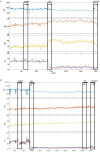
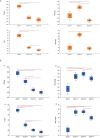
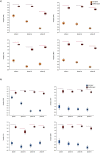
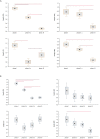
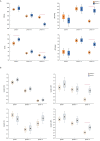
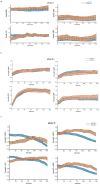
Similar articles
-
Entropy Measures in Analysis of Head up Tilt Test Outcome for Diagnosing Vasovagal Syncope.Entropy (Basel). 2018 Dec 16;20(12):976. doi: 10.3390/e20120976. Entropy (Basel). 2018. PMID: 33266699 Free PMC article.
-
[Adrenomedullin--the link between the sympathetic nervous system activation and peripheral vasodilatation in some patients with vasovagal syncope].Pol Merkur Lekarski. 2004 Sep;17(99):267-70. Pol Merkur Lekarski. 2004. PMID: 15628055 Polish.
-
Duration of head-up tilt test for patients with suspected vasovagal syncope.Europace. 2011 Apr;13(4):576-80. doi: 10.1093/europace/eur015. Epub 2011 Feb 25. Europace. 2011. PMID: 21357590
-
Influence of tilt training on activation of the autonomic nervous system in patients with vasovagal syncope.Acta Cardiol. 2006 Apr;61(2):123-8. doi: 10.2143/AC.61.2.2014324. Acta Cardiol. 2006. PMID: 16716012 Clinical Trial.
-
Nitrate stimulated tilt table testing: a review of the literature.Pacing Clin Electrophysiol. 2003 Jul;26(7 Pt 1):1528-37. doi: 10.1046/j.1460-9592.2003.t01-1-00222.x. Pacing Clin Electrophysiol. 2003. PMID: 12914633 Review. No abstract available.
Cited by
-
Feasibility of a new free mobility procedure to evaluate the function of the autonomic nervous system in patients with syncope.Sci Rep. 2020 Aug 19;10(1):13994. doi: 10.1038/s41598-020-70701-y. Sci Rep. 2020. PMID: 32814782 Free PMC article.
-
Autonomic and Cognitive Function Response to Normobaric Hyperoxia Exposure in Healthy Subjects. Preliminary Study.Medicina (Kaunas). 2020 Apr 10;56(4):172. doi: 10.3390/medicina56040172. Medicina (Kaunas). 2020. PMID: 32290164 Free PMC article.
-
Transfer Information Assessment in Diagnosis of Vasovagal Syncope Using Transfer Entropy.Entropy (Basel). 2019 Mar 29;21(4):347. doi: 10.3390/e21040347. Entropy (Basel). 2019. PMID: 33267061 Free PMC article.
-
Entropy Measures in Analysis of Head up Tilt Test Outcome for Diagnosing Vasovagal Syncope.Entropy (Basel). 2018 Dec 16;20(12):976. doi: 10.3390/e20120976. Entropy (Basel). 2018. PMID: 33266699 Free PMC article.
References
-
- Raj SR, Freeman R. Highlights in clinical autonomic neurosciences:faiting and fainters-who, why to do when they show up in the emergency departament? Autonomic Neuroscience. 2010;156:5–7. doi: 10.1016/j.autneu.2010.06.008. - DOI
-
- Brignole M, et al. ESC Guidelines for the diagnosis and management of syncope. Eur. Heart J. 2018;00:1–69. - PubMed
Publication types
MeSH terms
Substances
LinkOut - more resources
Full Text Sources
Other Literature Sources

